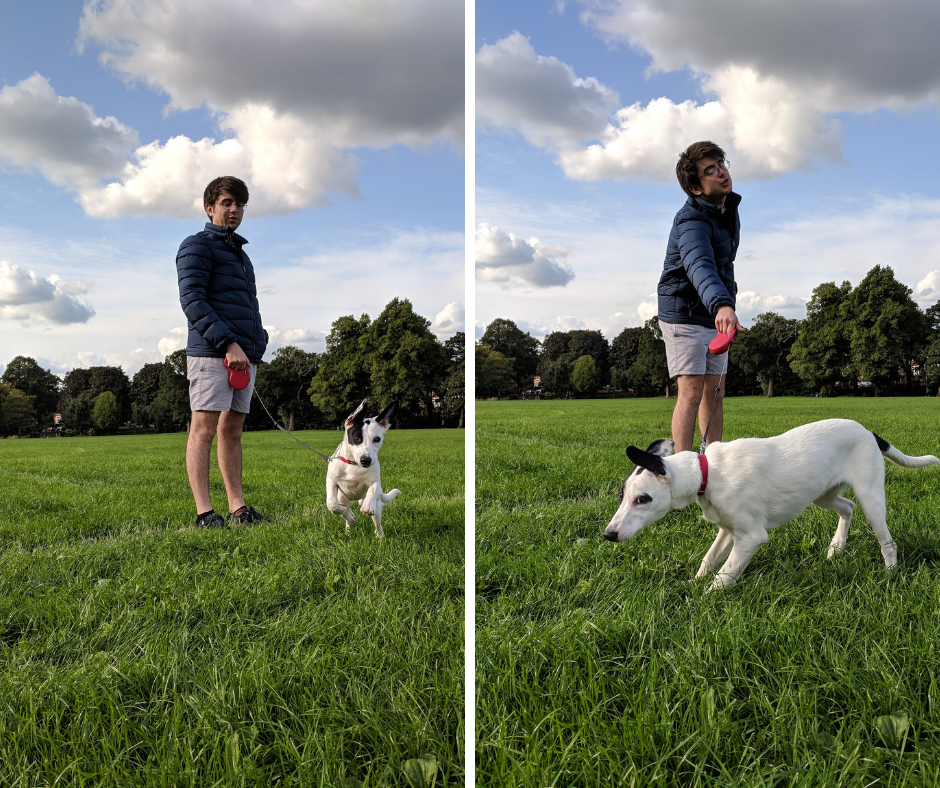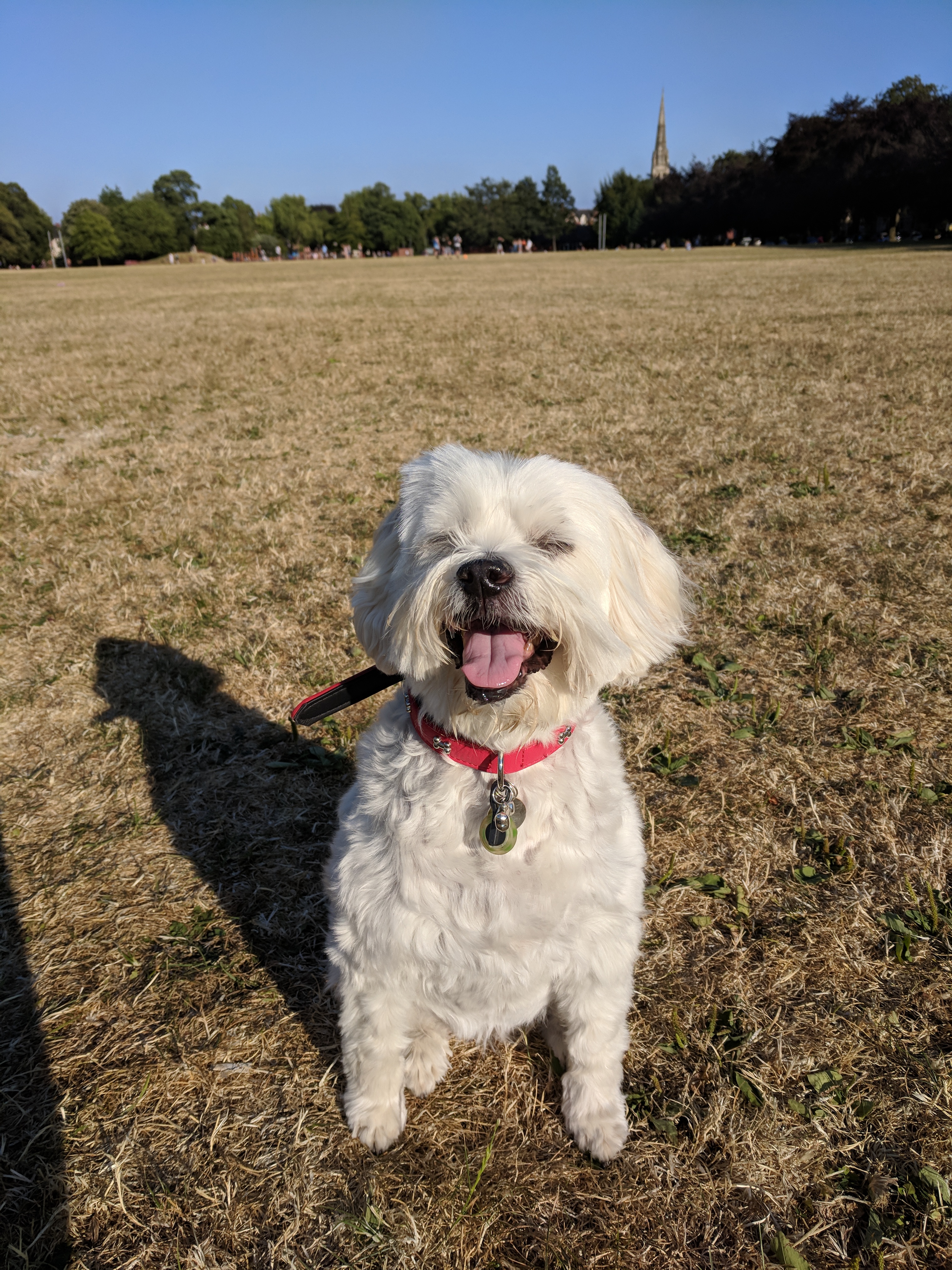Dog walking mistakes to avoid for a healthy spine…
You’re taking your dog for a walk. It’s a beautiful sunny day. You’re texting a friend about your upcoming trip to…
Suddenly — faster than you can say, “squirrel!” — your dog takes off.

You may not realise how common dog walking injuries are, but here at the clinic we see disgruntled dog lovers regularly.
Walking your furry little friend is a great way to maintain a healthy daily exercise routine. In fact, regular walking can even help with chronic low back pain. Owning a dog ensures you go for regular walks which strengthens the small of your back where the spin curves in. For all its benefits, walking a dog can have at least one major health disadvantage – back problems.
Avoiding back problems…
Even if you have no history of spinal issues, the daily grind of walking the dog can lead to serious issues if done incorrectly. When your back remains stiff, it absorbs the force of your dog pulling on the lead which can lead to lower back problems over time. Younger dogs in particular are full of energy and are more likely to pull you along. However, any dog, if not properly trained, can cause similar problems.
One of the best ways to avoid lower back pain is to bend your knees while walking. This way, your knees and not your back will absorb the force of your dog tugging. Use your core to stand straight and walk at a steady pace, using your body to turn the dog.
Try to wear sensible footwear that cushion your steps and avoid picking up your dog when possible. Footwear should provide comfort and adequate padding that supports your heels (i.e. avoid flip flops).
You can greatly minimise the risk of injury by improving your lead technique. Here are a few points to remember:
- The lead should be a comfortable distance so that your arms are not overstretched, allowing slight flexion at the elbows.
- Allow flexibility with the lead to avoid over extension if your dog suddenly lunges forward; however, try to not let your dog get too far ahead of you.
- Avoid erratic movements to avoid injury. Sudden extension can injure your back, particularly the facet joints.
- The longer the lead, the more lead there is for the dog to pull — and more potential for trouble if the dog takes off.
Do not go to the point of exhaustion, but rather gradually increase the distance every couple of days. Take frequent breaks if you need to; it gives your dog a break too. Treat walking just as you would any other physical exercise. Make sure you stretch before and after to avoid pulling a muscle!

When picking up after your dog, bend with your knees and use your leg muscles to squat down. Focus on using your core for stability.
Vary the terrain that you walk on. Take your dog down to the beach, explore the forests and fields and all the grass you can find. All of this variation will help to strengthen your ankles and be a welcome break for your lower body from the unforgiving tarmac.
Most importantly, pay attention. This makes sense for your physical and mental health. Getting outside for a bit of fresh air with your furry friend is a great time to switch off and focus on the present moment. Paying attention to your dog also means you’re ready for any tugs at the lead that could lead to a potential injury. That means the following:
- Don’t talk on your phone, text or engage in social media.
- Don’t wear headphones or a bluetooth headset.
- Scan the surrounding area for things that might attract or frighten your dog, such as other animals, children or cars.
- Watch where you’re walking so you can try to avoid obstacles or unstable terrain.
Avoiding Neck and Shoulder Injuries…
These are generally caused in two ways. Firstly, by the dog pulling on the lead too much. Having a dog pull you along rather than walking alongside you causes your arm to be pulled forwards, often at an awkward angle. This irritates the muscles and joints of the arm, shoulder and neck and can damage the soft tissues and joints in these areas.
Solution: Change up your lead! There are different types of leads that can help stop dogs pulling or you can read this post which has a number of ways to change your dogs behaviour to stop them pulling on the lead.
The second thing that irritates the neck and shoulders is by throwing balls and sticks for your dog. If this is done repeatedly with poor technique, you might end up with rotator cuff problems in the shoulder or pain and stiffness in the neck. Both of these injuries can lead to pain and lack of movement in the neck or shoulder.
Solution: Use a tennis ball thrower. This helps to reduce the stress on the arm and shoulder during the throwing action.
My top tips for avoiding dog walking injuries…

- Train your dog to be well behaved when walking and not to pull on the lead – this will help your neck, back and shoulders.
- Try different types of leads to help stop your dog from pulling too much. Halti head collars and harnesses are effective for controlling your dog when walking on a lead.
- If you regularly throw a ball for your dog, consider getting a ball thrower to help take the strain off your shoulder and arm. You can pick up one like this online for as little as £2.
- If your dog cannot easily get in and out of your car consider a ramp so that you do not have to lift them and potentially injure your back.
- Wear footwear that supports your foot and has good amount of grip to deal with muddy or slippery conditions.
You might be someone without enough time in the day to fit everything in, so why not turn your dog walk into an exercise routine? You can even add stretching and strengthening exercises into your routine, like lunges or a round of push-ups against a park bench. Be sure to let your dog have some off lead exercise time too!
I hope these tips help you to prevent injury when walking your dog, as they have helped me. If the niggles just won’t go away however, or if you do have any aches or pains following a dog walking incident then make sure you have them examined. Pop into the clinic and or give us a ring to book an appointment at Andy Davies Chiropractic Clinic and we will do our best to help you.






